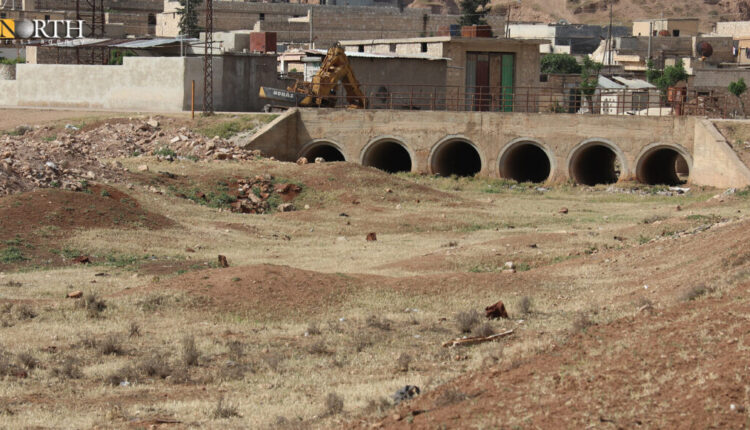Only one kilometer from Shahba Dam in the northern countryside of Syria’s Aleppo governorate, the 50-year-old farmer Mahmoud Osso is staring at his land, which he has not cultivated this year due to drought and lack of rainfall.
Osso, a resident of village called Qaraj Hasajek, relies on cultivation as a main source for their livelihood.
After Turkey built several dams on the Queiq River within its territory, the river dried up, worsening the villagers’ conditions.
The Queiq River, which is 129 kilometres long, flows through Aleppo governorate for about 110 km. It originates from the southern Aintab plateau in southeast Turkey and ends up south of the city of Aleppo.
In 1966, the Syrian government established Shahba Dam on the river southeast of the city of Azaz, north of Aleppo, to protect the city against floods.
“In the past there used to be a lot of water. Especially during heavy rainfalls, water reached our areas and also the dam,” Osso said.
Many villages in the Aleppo region’s northern countryside including Qol Serouj, Hasajek, Qaraj Hasajek, al-Wardiya, Tel al-Madiq, Smouqa, Hassin, Fafin and al-Muslimiyah used to benefit from the river in the past.
However, the new Turkish dams on the riverbed have caused water reduction, which in turn may cause an environmental disaster in the region.
Turkey currently stores water in five dams on the Euphrates River, the largest of which is Ataturk Dam with a storage capacity of 48 billion m³.
This storage capacity violates an international agreement signed with Syria in 1987 which stated that Syria’s share of water coming from Turkey should be no less than 500 m³ per second on average.
Residents of the Shahba region have not only been affected by the Turkish water reduction, but also by the lack of rainfall over the past two years.
In the past, Osso relied on heavy rainfall to cultivate different types of fruit, vegetables, cotton, wheat and barley.
Some of the farmers also relied on groundwater for irrigating their crops, but the lack of rainfall has decreased groundwater tables, leading to a decline in cultivation estimated by farmers at 50%.
According to the residents of the region, the drought and the low rainfalls also affect animals, especially fish, and contribute to the spread of diseases and insects.

